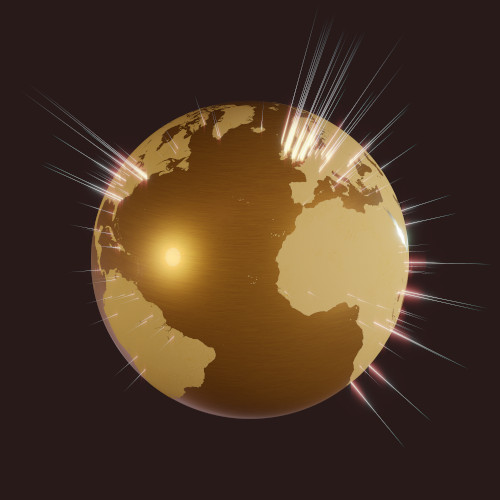A couple of years after Matthew Henry, Dan asked me to produce map graphics for another film, again on church history but this time with a far wider scope - global, in fact - titled Revival: the Work of God. Dan wanted the camera to be able to rove around over the planet's surface as the storyline moved from one location to another, with vertical beams of light shining up at the locations where various events took place.

So I found myself needing to build a stylised computer-generated model of the entire planet. It quickly became apparent that an ultra-high-definition Earth was far beyond the technical capabilities of my default 3D animation app, Anim8or, so I had to knuckle down and get to grips with Blender. Don't get me wrong, I really wanted to like Blender. I'm quite a fan of open-source creative software in general, and have been using GIMP, Inkscape and Audacity on the regular for many years. Blender is a well-established, very powerful open-source program, and should have been one of my new best friends, but unfortunately I found its interface extremely obtuse and overcomplicated, which made the whole project more like hard work than it really needed to be.
Needless to say, building a whole planet (even a heavily-stylised one) is a daunting job and I investigated all possible routes to avoid having to actually do it. The internet is surprisingly devoid of geometrically-accurate Blender-compatible models of the Earth - there are some spheres with very elaborate textures, but none where the textures would stand up to the super-close scrutiny that the film required, and none that I could find where the coastlines had actually been modelled as separate polygons. In the end, I bought one of the textured-sphere models and then spent a long, excruciating stretch of time painstakingly working my way around the entire globe's worth of coastlines, cutting along them to make separate polygons, and gradually replacing the textured surface with two new materials: a bronze-ish effect for the water, and a rougher sandstone-ish one for the land.
Anyway, I got it built in the end. Having finally cracked one shot, the rest of the process involved a lot of relatively incremental changes to produce most of the other thirty-several. Add in some text overlays for chapter headings and a scrolling timeline, and allow for many, many hours of rendering (including a really annoying bit where I had to re-render some shots due to having misspelled the label for Massachusetts), and eventually Dan got his planet.








